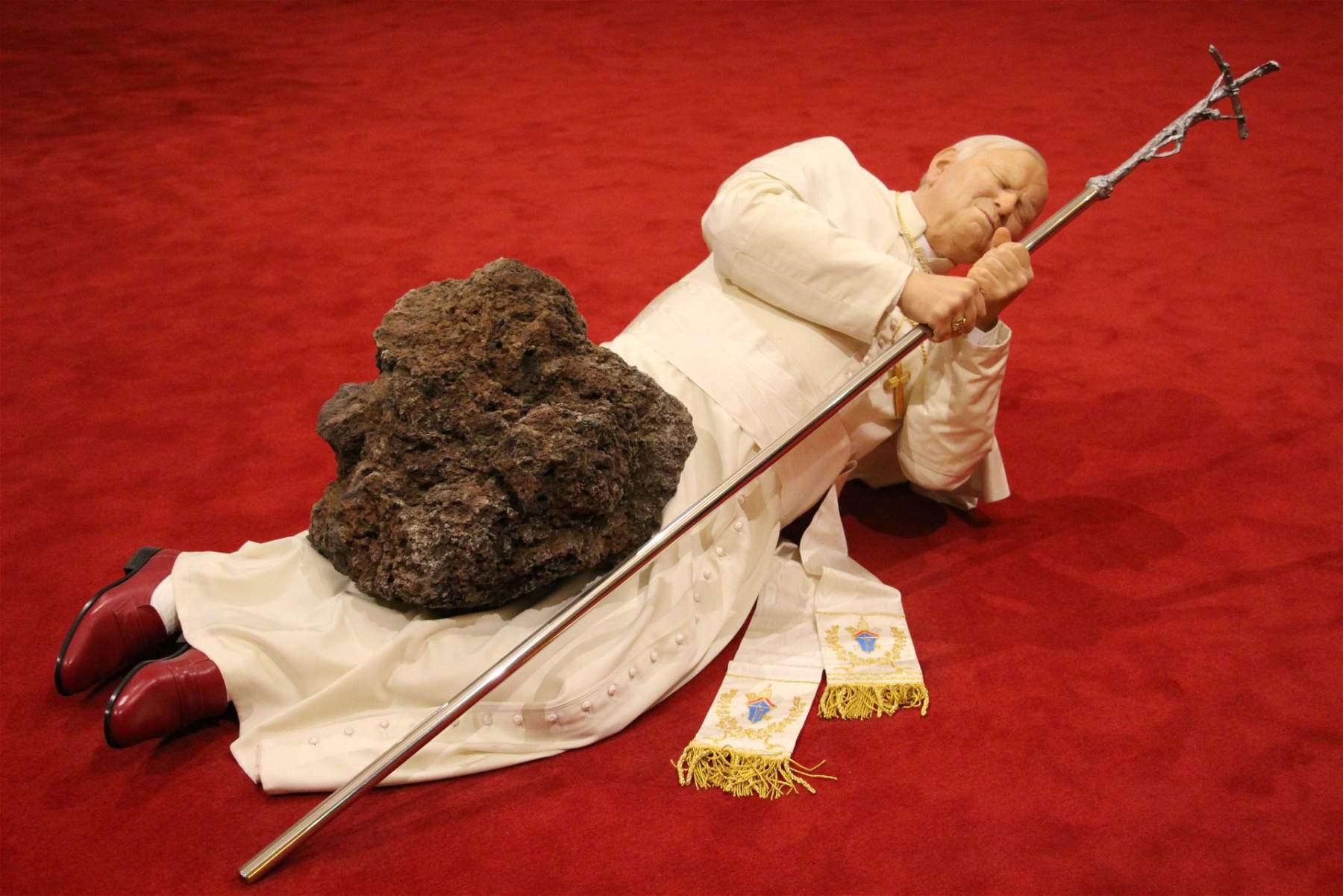Cattelan-Druet case, Paris court agrees with Italian: he is the author of the works
A Paris court has ruled in favor of Maurizio Cattelan in the court case pitting him against Daniel Druet, the material executor of several of his wax sculptures (such as The Ninth Hour and Him), who had sued him claiming intellectual property rights to eight works Cattelan commissioned from him between 1999 and 2006, and financial compensation of 6 million euros. Cattelan had met Druet, now in his eighties, in France in the 1990s, after a visit to the Musée Grevin in Paris, where several wax creations by the talented French sculptor are preserved: Cattelan had decided to turn to him to see his ideas materialized.
This is an entirely common practice in the contemporary art world: internationally renowned artists elaborate ideas often without even modeling sketches, but simply tracing them on paper, and then rely on specialized artisans, or other artists, to realize them. This is how it went with Druet, who had decided to take legal action to have his name recognized alongside Cattelan’s. No dice for him: the Paris court, in fact, rejected his petition.
The judges of the III Chamber of the Paris court recalled that Druet “does not claim the status of co-author of a collaborative or composite work, but the quality of sole author of the works in question.” the problem, however, according to the Paris court, lies in the fact that Druet did not take action against Cattelan, but against his representative, the Perrotin gallery, and against an institution, the Musée Monnaie in Paris, which had held a major Cattelan retrospective in 2016 (the institution, according to Druet, had not acknowledged the French artist’s authorship of the works). “By failing to summon Maurizio Cattelan, the alleged author, in person [...], Daniel Druet must be declared inadmissible in all his claims for copyright infringement”: so the Paris court. Also according to the court, Cattelan had provided Druet with precise indications on the appearance and dimensions of the works, and furthermore, gallery lawyer Perrotin reiterated how the entire conception of the sculpture must be exclusively attributed to Cattelan, in all its details.

In fact, the Paris court also recognized that “it is undisputed that the precise directives for setting up the wax effigies in a specific configuration, relating in particular to their positioning within the exhibition spaces aimed at playing on the emotions of the public (surprise, empathy, amusement, repulsion, etc.), were prescribed by [Maurizio Cattelan] alone, Daniel Druet in no way being able - nor seeking to do so - to arrogate to himself the slightest participation in the choices regarding the scenographic arrangement of the presentation of the said effigies (choice of the building and dimensions that go along with the character of the character, the direction of the gaze, the lighting, even the destruction of a glass roof or a parquet floor to make the setting more realistic and suggestive) or the content of the possible message to be conveyed through this setting.” In short, the judges in fact also determined what the characteristics ofconceptual art are. And then, they also ordered Druet to pay a sum of 10,000 euros to the Perrotin Gallery and the Monnaie in Paris.
According to Pierre-Olivier Sure, lawyer for the Perrotin gallery, the ruling sets the standard: “For the first time, the magistrates are consecrating conceptual art with a principled decision. We won on the two essential points: by having the other side declared inadmissible and by having the judge say what conceptual art is in law and what the qualifications are for their copyrights.” Not of the same opinion is Jean-Baptiste Bourgeois, Druet’s lawyer, who says the court failed to address the issue of authorship of the works: “It is an absurd, incomprehensible and unjustified decision. The only thing held is that the procedure is invalid because we did not cite the artist who claimed that the disputed works were all submitted under his name. This argument had already been made and tried before this same court but not before the same magistrates.”
“It is with immense satisfaction,” said gallerist Emmanuel Perrotin, “that I learn of this decision that consecrates Maurizio Cattelan’s work as a conceptual artist...I am delighted that this decision puts an end to this controversy that more generally has threatened most contemporary artists.”
 |
| Cattelan-Druet case, Paris court agrees with Italian: he is the author of the works |
Warning: the translation into English of the original Italian article was created using automatic tools. We undertake to review all articles, but we do not guarantee the total absence of inaccuracies in the translation due to the program. You can find the original by clicking on the ITA button. If you find any mistake,please contact us.





























